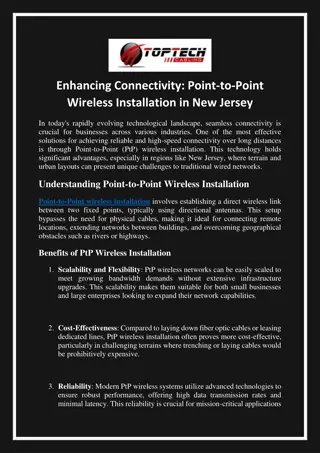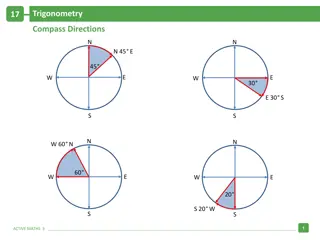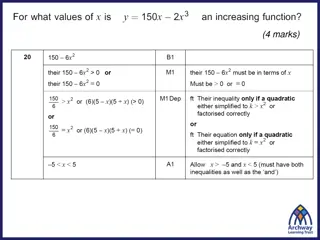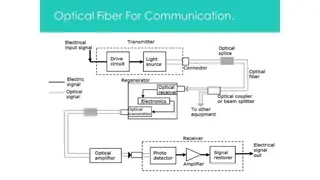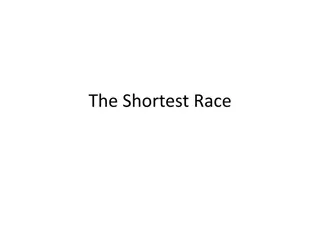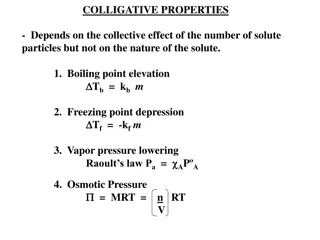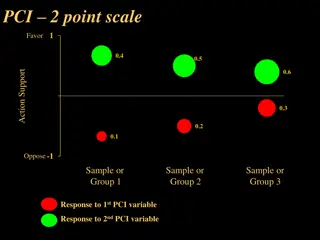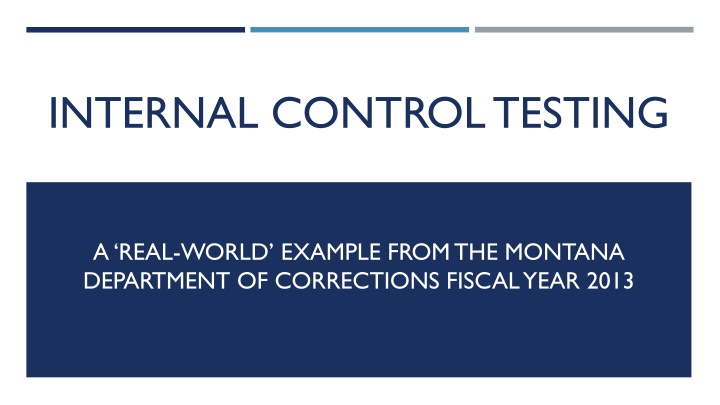
Internal Control Testing Process: A Practical Guide
Explore the comprehensive internal control testing process utilizing a real-world example from the Montana Department of Corrections in fiscal year 2013. Learn about the five key elements of internal control, where to start the process, what steps to take next, and how to conclude with preparation, corrective actions, and follow-up. Follow this structured approach to enhance organizational control mechanisms effectively.
Download Presentation

Please find below an Image/Link to download the presentation.
The content on the website is provided AS IS for your information and personal use only. It may not be sold, licensed, or shared on other websites without obtaining consent from the author. If you encounter any issues during the download, it is possible that the publisher has removed the file from their server.
You are allowed to download the files provided on this website for personal or commercial use, subject to the condition that they are used lawfully. All files are the property of their respective owners.
The content on the website is provided AS IS for your information and personal use only. It may not be sold, licensed, or shared on other websites without obtaining consent from the author.
E N D
Presentation Transcript
INTERNAL CONTROL TESTING A REAL-WORLD EXAMPLE FROM THE MONTANA DEPARTMENT OF CORRECTIONS FISCAL YEAR 2013
FIVE ELEMENTS OF INTERNAL CONTROL Control environment (values, ethics, integrity) Risk assessment (inherent and direct) Control activities (policies and procedures) Information and communication (stakeholder meetings, IT systems, various reports financial and performance) Monitoring (management, internal auditors, audit committees, etc.)
WHERE TO START? Begin the process by determining objectives to be achieved Next review our environment and document where are the highest risks based on: Quantitative factors Qualitative factors Consideration of Fraud
WHAT NEXT? Determine what the inherent risks are within a transaction cycle, compliance element, public interest, or environmental factor Determine the controls in place, or other external factors, that mitigate risks identified Build a testing plan
AND THEN? Prepare a report of findings Determine corrective actions Follow-up






